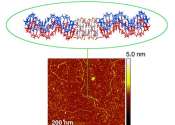Anasys licenses ORNL nanoscale mass spectrometry imaging technology
Anasys Instruments Corp. has licensed a Department of Energy Oak Ridge National Laboratory technology that allows for simultaneous chemical and physical characterization and could lead to advances in materials and drug development.








